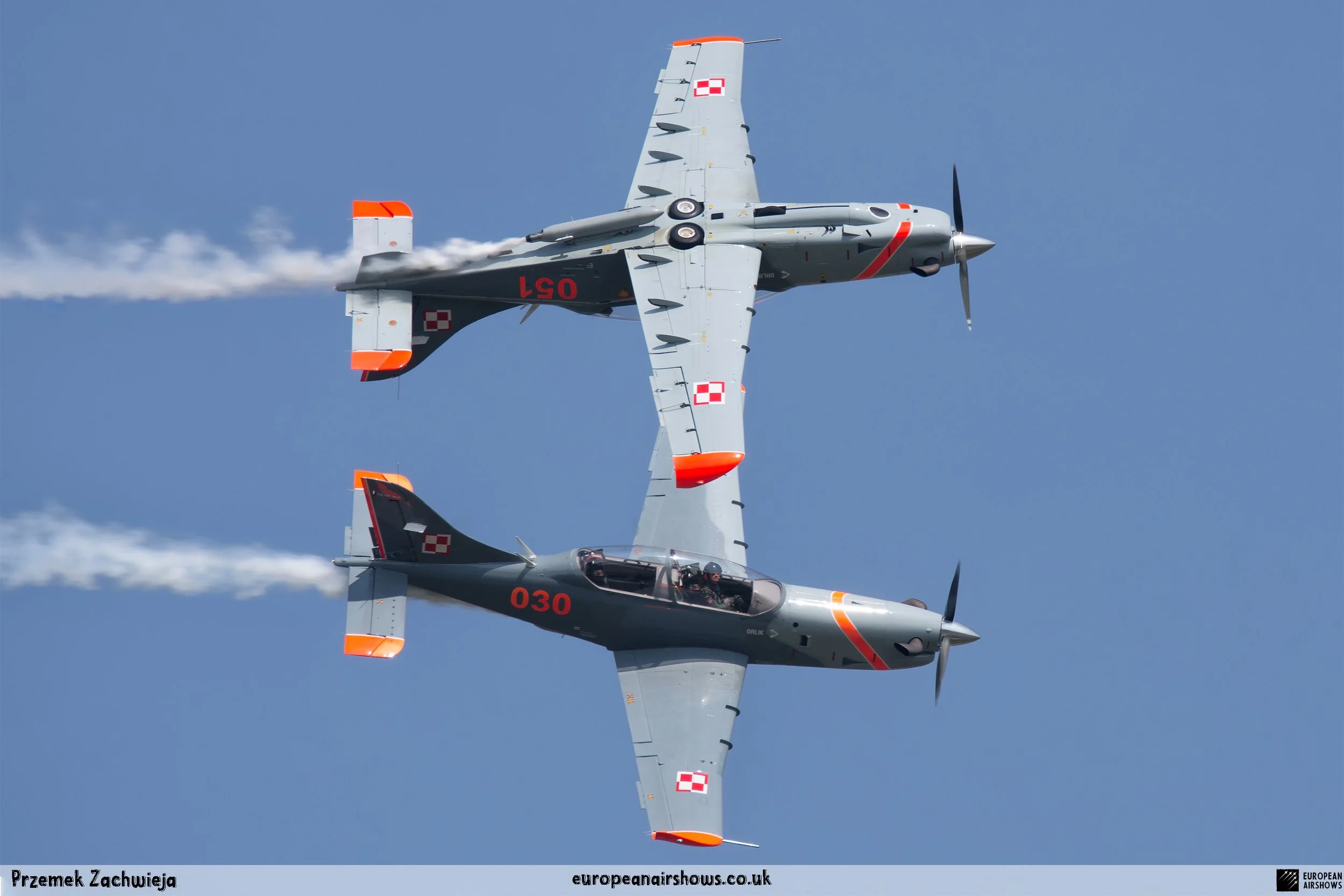
October 12 / PZL-130 Orlik first flight first flight
First Flight 12 October 1984
PZL-130 Orlik
The PZL 130 Orlik, known in English as the “Eaglet,” is a Polish turboprop, single-engine, two-seat trainer aircraft developed by PZL Warszawa-Okecie. The aircraft was initially conceived as a replacement for the Polish Air Force’s ageing PZL-110 Kolibers and was designed to adhere to the US FAR 23 standard, which governs airworthiness standards for normal, utility, acrobatic, and commuter category airplanes.
The design and development of the Orlik were overseen by Andrzej Frydrychewicz, the head engineer at PZL Warszawa-Okecie. The aircraft featured a low-aspect ratio wing, a design choice intended to simulate the handling characteristics of jet fighters, thereby providing more realistic training for future jet pilots. The initial powerplant for the Orlik was the Soviet-designed and built Vedeneyev M14Pm radial engine, with plans to switch to a modified Polish-built Ivchenko AI-14 engine for production models.
The first prototype of the Orlik took to the skies on October 12, 1984. This was quickly followed by a second prototype in December of the same year and a third in January 1985. These early prototypes demonstrated the basic design and capabilities of the aircraft but were still powered by piston engines.
Recognizing the potential for export markets, PZL Warszawa-Okecie developed a turboprop variant known as the PZL-130T Turbo Orlik. The third prototype was modified to include a 410 kW (550 shp) Pratt & Whitney PT6A-25P turboprop engine, and it first flew in this configuration on July 13, 1986. Unfortunately, this prototype was destroyed in a crash in January 1987 during a demonstration flight for a representative of the Colombian Air Force.
Despite this setback, development continued with two additional turboprop prototypes. In 1989 and 1990, these prototypes were powered by different engines: a Czech-built 560 kW (750 shp) Walter M-601E and another Pratt & Whitney PT6A-25, respectively. These versions were designated the PZL-130TB and PZL-130TP.
By 1990, it became clear that the piston-engined Orlik variants were not meeting performance expectations, particularly due to the insufficient power provided by the Polish-built radial engines. Consequently, the Polish Air Force shifted its focus to the more powerful and efficient turboprop variants, specifically the M-601 powered PZL-130TB. This marked the end of development for the piston-engined versions of the Orlik, solidifying the aircraft’s future as a turboprop trainer.
Orlik Facts
Initial Purpose: The PZL 130 Orlik was designed to replace the PZL-110 Kolibers in the Polish Air Force as a primary trainer aircraft.
Design Supervision: The project was led by Andrzej Frydrychewicz, the head engineer at PZL Warszawa-Okecie.
First Flight: The first prototype of the PZL 130 Orlik took its maiden flight on October 12, 1984.
Wing Design: The Orlik features a low-aspect ratio wing, intended to simulate the handling characteristics of jet fighters for more realistic pilot training.
Initial Engine: The initial prototypes were powered by Soviet-designed Vedeneyev M14Pm radial engines, with plans to switch to Polish-built Ivchenko AI-14 engines for production models.
Turboprop Variant: PZL developed a turboprop variant, the PZL-130T Turbo Orlik, intended for export markets. This version first flew on July 13, 1986, with a Pratt & Whitney PT6A-25P engine.
Prototype Crash: The third prototype, modified to the Turbo Orlik configuration, crashed in January 1987 during a demonstration for the Colombian Air Force.
Further Development: Two additional turboprop prototypes were developed in 1989 and 1990, powered by a Walter M-601E and a PT6A-25 engine, designated as the PZL-130TB and PZL-130TP, respectively.
Abandonment of Piston Engines: By 1990, development of the piston-engined Orlik was abandoned due to insufficient power from the Polish-built radial engines.
Focus on Turboprop: The Polish Air Force and PZL shifted their focus to the more powerful and efficient turboprop variants, specifically the M-601 powered PZL-130TB, marking the future of the Orlik as a turboprop trainer aircraft.










